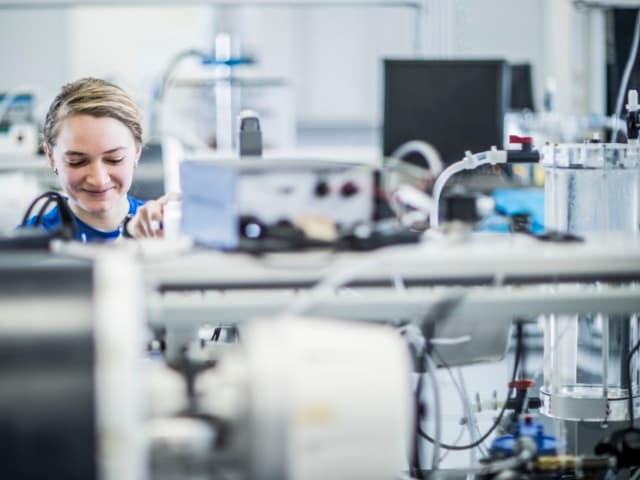Rated Burst Pressure & Leak Testing
Maximize your medical device safety and reliability with comprehensive pressure and leak testing. Get precise validation of your products' performance under real-world conditions, streamlined regulatory compliance, and early detection of potential issues. From catheters to vascular grafts, protect your innovation and patients with proven testing methods.

What is Rated Burst Pressure & Leak Testing at Element?
Rated burst pressure and leak testing evaluates medical devices containing liquid or air during use, testing them to failure under worst-case conditions. At Element, we provide comprehensive testing services that measure ruptures, leaks, and pressure loss, delivering critical data about your product's safety and reliability.

What Can Element Offer You For Rated Burst Pressure & Leak Testing?
Products and components we test
Products and components we test
Our testing capabilities cover your complete medical device portfolio, from full assemblies to critical subcomponents. We specialize in testing balloon-mounted catheters, endovascular grafts, vascular prostheses, and complex fluid management systems including connectors, vent fittings, and catheter tip seals. Our expertise ensures thorough validation across your entire product range.
Key Tests Offered
Key Tests Offered
Comprehensive testing solutions deliver the data you need for product validation and regulatory compliance. Our capabilities include low-pressure testing up to 100 psi and high-pressure testing up to 1,000 psi, balloon fatigue assessment, compliance determination, and crucial flow measurements including inflation/deflation timing and contrast media flow rates. Our comprehensive testing includes:
- Low-pressure testing (up to 100 psi)
- High-pressure testing (up to 1,000 psi)
- Balloon fatigue assessment
- Compliance determination
- Inflation/deflation timing
- Contrast media flow rates
- Water entry pressure testing
Methods And Solutions Offered
Methods And Solutions Offered
Your testing requirements are unique, and our solutions reflect that. We offer custom testing programs with programmable sequences tailored to your specific device and clinical requirements. Choose between air or liquid testing mediums, backed by comprehensive data collection that supports your regulatory submissions and quality assurance needs. Our solutions include:
- Custom programmable test sequences
- Air and liquid testing mediums
- Comprehensive data collection
- Regulatory documentation support
Rated Burst Pressure Testing:
We use complete catheters or subassemblies with the balloon mounted on the catheter. This measures the pressure at which 99% of balloons can survive with 95% confidence. Ruptures, leaks, and pressure loss are recorded, and failure modes are noted to characterize the balloons.
We also test non-stented endovascular grafts and vascular prostheses for burst strength per ISO 7198. Burst strength is measured by directly filling the device with fluid or using a balloon distention apparatus. Common tests for vascular grafts include water entry pressure, leakage, and compliance.
Leak Testing and Detection:
Leak tests detect manufacturing defects in fluid management systems by using air or liquid flow through components like connectors, vent fittings, and catheter tip seals. Our advanced equipment assesses leakage with either air or liquid.
We also offer custom testing, allowing for programmable steps tailored to each device and its clinical use.
Pressure and Flow Rate Testing:
In balloon catheter pressure tests, the device is inflated to rated burst pressure (RBP) and held for 30 seconds (or another specified time). The balloon is then deflated, and the process is repeated for 20 cycles.
Balloon or endovascular graft compliance is determined by the pressure-diameter relationship. We use balloon compliance charts to ensure proper catheter size selection for the target vasculature. Balloon inflation and deflation times are key specifications, as they control how long a vessel remains occluded and blood flow is obstructed.
Contrast media flow rate testing for catheters is performed at both maximum burst pressures and during clinical use pressures.
Cutting-Edge Equipment We Use
Cutting-Edge Equipment We Use
Access advanced instrumentation designed for both low and high-pressure applications, delivering the precise measurements you need. Our specialized equipment includes balloon distention testing apparatus and sophisticated fluid management system evaluation tools, ensuring accuracy across all test parameters. Available equipment includes:
- Low-pressure testing instruments
- High-pressure testing apparatus
- Balloon distention testing equipment
- Fluid management system analyzers
Which Labs Offer This Service
Which Labs Offer This Service
Our team operates from Life Sciences hubs across the world, providing convenient access to our expert capabilities. Find your nearest Life Sciences hub on our Locations Page.
Advanced capabilities
Standards we test to and materials we test
- ISO 7198
- ISO 10555-1, 10555-3, 10555-4, 10555-5
- ISO 11070
- ISO 25539-1, 25539-2
- Catheters
- Balloon catheters
- Medical valves
- Medical bags
- Medical tubing
- Medical connectors
- Endovascular grafts
- Vascular prostheses
- Catheter tip seals
- Vent fittings
Your Challenges, Our Solutions
Safety validation assurance
Regulatory compliance complexity
Performance confidence in real-world conditions
Quality excellence verification
Why Choose Element

Complete testing solutions
Custom testing excellence
Precision measurement expertise
Regulatory compliance support
Related services

Medical Device Testing Services
With Element as your medical device testing partner, you’ll enjoy the benefit of a single comprehensive supplier across feasibility, R&D and prototype trials, through product development, regulatory validation and production quality control.

ISO 10555 Catheter Testing services
We offer comprehensive testing services for catheters and balloons under ISO 10555 standards for testing intravascular sterile use catheters.

ISO 11070 Guidewire Testing
Element offers ISO 11070 guidewire testing, evaluating cardiovascular devices for performance, durability, and safety through simulated use, tensile strength, torque, and flexibility tests.

Stent & Stent Graft Testing Services
Element provides expert stent testing services to validate cardiovascular device compliance, durability, and performance. Our comprehensive testing meets regulatory standards, supporting safe and effective device
